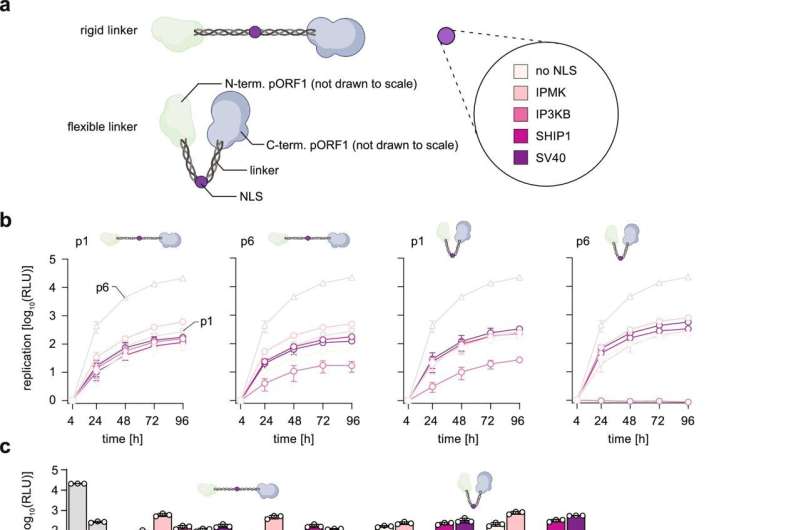This article has been reviewed according to Science X's editorial process and policies. Editors have highlighted the following attributes while ensuring the content's credibility:
fact-checked
peer-reviewed publication
trusted source
proofread
How human-derived RNA fragments help the hepatitis E virus

Why does hepatitis E become chronic in some patients, and why do medications not work? To find out, an international research team led by scientists from Bochum observed a patient with chronic hepatitis E infection over a year.
Repeated sequencing of the virus RNA showed that the virus incorporated various parts of the host's messenger RNA into its genome. This resulted in a replication advantage, which may have contributed to the infection becoming chronic.
"The so-called insertion of host RNA can possibly predict the transition of an acute infection to a chronic condition," says Dr. Daniel Todt, head of the Computational Virology research group in the Department of Medical and Molecular Virology at Ruhr University Bochum, Germany.
The researchers report in the journal Nature Communications on June 6, 2024.
Sequencing of the virus population
Around 20 million people worldwide contract hepatitis E every year. Normally, the infection heals without consequences, but it can be life-threatening for pregnant women or people with suppressed immune systems. In some cases, it becomes chronic. There are no specific effective medications. The broad-spectrum antiviral drug Ribavirin is also used against hepatitis E, but it does not always work.
How can the virus evade the immune system? Why does the infection become chronic and not heal? The researchers wanted to find out and analyzed for the first time all virus populations of a chronically infected patient over a period of more than a year. They examined more than 180 individual sequences from blood samples in detail.

Replication in cell culture benefits from host RNA
"The hepatitis E virus has a so-called hypervariable region in its genetic information, into which it can incorporate various RNA sequences from host cells," says Todt.
His team was able to show that the composition of this region changed massively during the observation period. Additionally, many different compositions occurred simultaneously. In cell culture experiments, it was shown that incorporating host RNA provided a replication advantage: The altered viruses could replicate better than others.
"We assume that this is partly responsible for the infection becoming chronic and the therapy failing," says Todt.
The researchers examined the composition of the host RNA incorporated into the virus to determine if there were any common features characterizing the gene segments.
"However, we could not detect any meaningful similarities," says Todt. The incorporated gene sequences are predominantly those that are very common in host cells, indicating a random selection.
"Possibly, during hepatitis E infection, a race between the virus and the immune system occurs in the body," speculates Todt. If the virus manages to incorporate host RNA before the immune system successfully combats the infection, it may lead to a chronic course.
"Host RNA in the viral genome could, in any case, serve as a biomarker in the acute phase of an infection, indicating early on that it is likely to become chronic."
The researchers plan to expand their studies to larger cohorts of patients.
More information: Michael Hermann Wißing et al, Genetic determinants of host- and virus-derived insertions for hepatitis E virus replication, Nature Communications (2024). DOI: 10.1038/s41467-024-49219-8




















